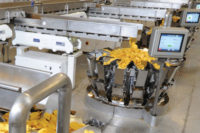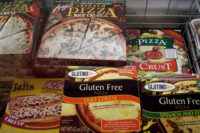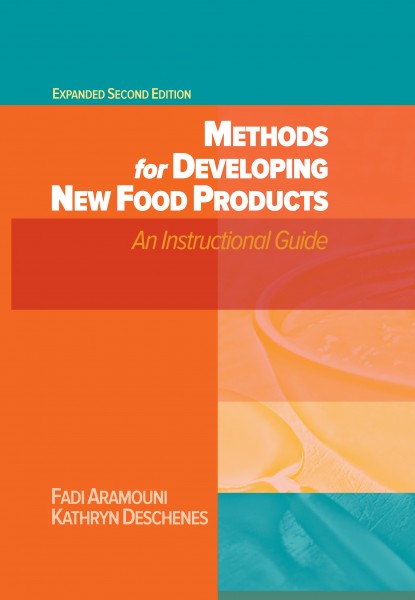When Michael Smulders first heard the call from his customers with Celiac disease for better-tasting gluten-free products more than a decade ago, the trend was just settling in. From that small bakery in a natural foods store in Glastonbury, CT, Bakery on Main was born—and now it is delivering more than 30 gluten-free items on seven product lines.
Of course, while Smulders wanted the business to take off, he couldn’t predict the rapid growth of the gluten-free category. Once considered a fad, gluten free has gone mainstream, with more than 15 percent of North American households eating gluten-free foods. As a result, the market for gluten-free foods has doubled within the past five years and is now estimated to be approximately $5.5 billion. For Smulders, this was good for business, but presented an immediate need to scale and increase capacity.
“We were operating at 100 percent of capacity,” says Smulders, owner of Bakery on Main. “Our bulk handling equipment, which consisted largely of inclined conveyor belts, was inefficient and very labor intensive. It was also an open system, so ingredients were exposed to the atmosphere.”
After investigating various ways to upgrade the existing equipment, all of which proved unsatisfactory, Smulders decided to build an entirely new facility with an integrated bulk handling system designed specifically for gluten-free baked goods. To meet his needs, Smulders sought the aid of an independent engineering firm to handle the facility design. Working closely with the project engineering division of Flexicon Corporation, the team created a fully integrated system based on the Flexicon FLEXI-DISC tubular cable conveyor (TCC) system.
Inside the TCC system at the Bakery on Main facility—now spanning 110,000 sq. feet and 20 ft. high—a series of low-friction polymer discs attached to a stainless steel cable gently slide bulk materials through smooth stainless steel tubing. This conveying action and dust-tight operation turned out to be the ideal solution for the transfer of fragile, contamination-sensitive food products. The stainless steel tubing of the system can be positioned horizontally, vertically or at any angle. Because the system is modular, inlets and outlets can be added as needed to control the flow of material. The system can also be lengthened or shortened to fit the available space.
The expanded facility allows Bakery on Main to operate two separate bulk handling systems from Flexicon, one for granola and another for oatmeal. Complete integration of this system allows for fully automated production of these products.
“The new facility gives us the increased capacity we need without increasing our manpower requirements,” says Smulders. “It now takes less time to produce a batch. The new systems reduce damage to ingredients and are much easier on the workers. Also, because the new systems are enclosed, ingredients have much less contact with the atmosphere.”
During production, granola ingredients are released from an extruder into the bulk bag filler equipped with an inflatable seal, sensor and indicator. Adjustable extension posts accommodate bulk bags as tall as 91 in. when full to accommodate lower-density materials that occupy more space per pound. Palletized bags are then transported by forklift to a dual bulk bag discharger system. From each bulk bag discharger, ingredients flow onto a vibratory feeder and through an adjustable weir gate into a non-metered inlet adapter on a tubular cable conveyor having one vertical and two horizontal sections. The weir gate is programmed to adjust the feed rate according to the bulk density of the material.
Both dischargers rest on load cells that measure weight loss and signal the vibratory feeders to stop when a pre-programmed weight has been transferred from the discharger to a mixer. Minor ingredients are manually deposited into a small hopper due to the need for higher accuracy and introduced through a metered inlet adapter. The combined ingredients are then discharged from the TCC through a full-flow inline discharge adapter and fed into the mixer. Once blended, the ingredients are fed into an oven and onto a moving conveyor belt. Baked granola then discharges into the surge hopper of a vibratory feeder that delivers the material into a non-metered inlet adapter. The TCC discharges finished product through inline tubular discharge valves into two packaging machines equipped with level sensors that signal a PLC to maintain surge hopper fill levels by starting and stopping the conveyor. Any excess granola is discharged through the system’s drive wheel discharge adapter into open boxes, which are transported by fork truck to a Flexicon TIP-TITE box dumper positioned at the intake end of the TCC. The boxes are hydraulically raised to create a dust-tight seal against a discharge hood, which is then rotated to mate with a gasketed, non-metered inlet adapter of the conveyor, for re-transporting the material to the packaging machines.
For more information:
Flexicon, 610-814-2400,
sales@flexicon.com, www.flexicon.com.






